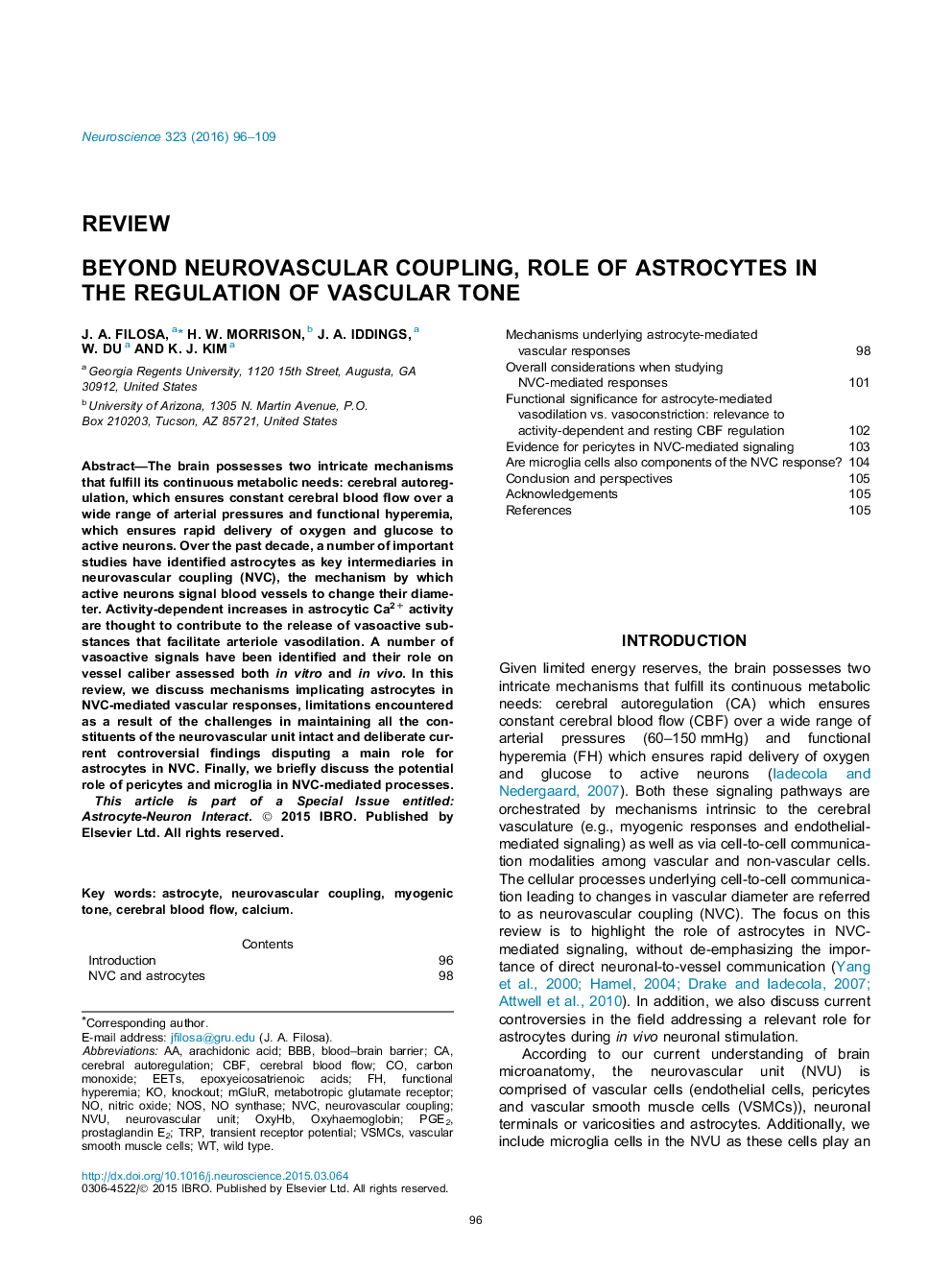| Article ID | Journal | Published Year | Pages | File Type |
|---|---|---|---|---|
| 6271087 | Neuroscience | 2016 | 14 Pages |
â¢Constituents of the neurovascular unit.â¢Role of astrocytes in the regulation of vascular tone.â¢Functional significance for astrocyte-mediated vasodilation vs. vasoconstriction.â¢Evidence for pericyte-evoked capillary dilation.â¢Microglia a missing component of the neurovascular unit.
The brain possesses two intricate mechanisms that fulfill its continuous metabolic needs: cerebral autoregulation, which ensures constant cerebral blood flow over a wide range of arterial pressures and functional hyperemia, which ensures rapid delivery of oxygen and glucose to active neurons. Over the past decade, a number of important studies have identified astrocytes as key intermediaries in neurovascular coupling (NVC), the mechanism by which active neurons signal blood vessels to change their diameter. Activity-dependent increases in astrocytic Ca2+ activity are thought to contribute to the release of vasoactive substances that facilitate arteriole vasodilation. A number of vasoactive signals have been identified and their role on vessel caliber assessed both in vitro and in vivo. In this review, we discuss mechanisms implicating astrocytes in NVC-mediated vascular responses, limitations encountered as a result of the challenges in maintaining all the constituents of the neurovascular unit intact and deliberate current controversial findings disputing a main role for astrocytes in NVC. Finally, we briefly discuss the potential role of pericytes and microglia in NVC-mediated processes.
